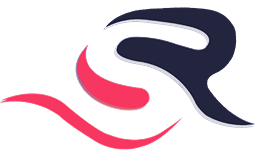Recruitment is the backbone of any organization, ensuring the right talent is placed in the right roles to drive growth and innovation. However, this critical process comes with its own set of challenges. From finding qualified candidates to ensuring a smooth onboarding experience, recruiters often navigate a complex landscape. Fortunately, modern tools and technologies are revolutionizing the way recruitment is conducted, addressing these challenges head-on.
Key Challenges in the Recruitment Process
- Finding Qualified Candidates: One of the biggest hurdles is identifying candidates with the right skills, experience, and cultural fit. The vast pool of job seekers makes it difficult to sift through resumes and identify top talent.
- High Volume of Applications: Popular job postings can attract hundreds or even thousands of applications, overwhelming recruiters and delaying the hiring process.
- Reducing Time-to-Hire: Prolonged hiring cycles can lead to losing top candidates to competitors. Organizations often struggle to streamline the process without compromising on quality.
- Bias in Recruitment: Unconscious bias can creep into the hiring process, affecting diversity and inclusion goals. This not only impacts company culture but also limits access to a broader talent pool.
- Candidate Experience: A poor recruitment experience can harm an organization’s employer brand. Clear communication, timely updates, and a user-friendly application process are critical but often neglected.
- Retention and Fit: Even after hiring, ensuring that candidates are the right fit for the role and the organization remains a challenge. High turnover rates can be costly and disruptive.
How Modern Tools are Revolutionizing Recruitment
Modern recruitment tools leverage technology to tackle these challenges, offering efficiency, scalability, and precision. Here’s how:
- Applicant Tracking Systems (ATS): ATS platforms streamline the application process by organizing and managing candidate information. They allow recruiters to search, filter, and rank applicants based on predefined criteria, reducing time spent on manual tasks.
- AI and Machine Learning: AI-powered tools analyze resumes and match candidates to job descriptions with high accuracy. Machine learning algorithms can predict candidate success based on past hires and performance metrics.
- Video Interviewing Platforms: Video interviewing tools enable remote interviews, saving time and resources. Features like automated interview scheduling and AI-driven sentiment analysis provide deeper insights into candidate responses.
- Chatbots for Candidate Engagement: AI-driven chatbots assist with candidate queries, provide status updates, and guide applicants through the hiring process. This improves the candidate experience while freeing up recruiters for more strategic tasks.
- Data Analytics: Recruitment analytics tools help organizations track key performance indicators (KPIs) such as time-to-hire, cost-per-hire, and source effectiveness. Insights from data analytics can optimize recruitment strategies and improve decision-making.
- Gamification and Assessments: Innovative tools use gamification to evaluate candidates’ problem-solving, teamwork, and technical skills. These assessments provide a dynamic and engaging way to identify top talent.
- Social Media Recruitment Tools: Platforms like LinkedIn, Facebook, and Twitter are increasingly used for sourcing candidates. Tools that integrate with these platforms enable targeted outreach and personalized communication.
Conclusion
Recruitment is a dynamic and evolving field, and modern tools are transforming how organizations attract, assess, and onboard talent. By addressing key challenges with technology, companies can not only improve efficiency but also enhance the candidate experience and make more informed hiring decisions. As the job market continues to evolve, leveraging these tools will be critical to staying competitive and building a workforce ready for the future.


